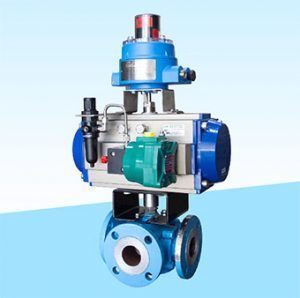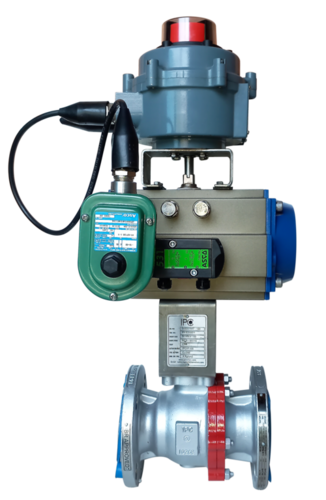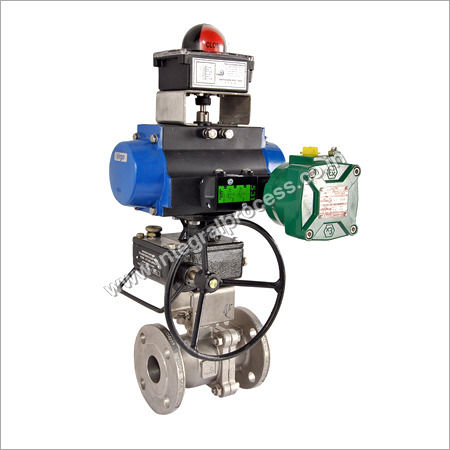3 Way Ball Valve
3 Way Ball Valve Specification
- Connection
- Flange / Threaded / Socket Weld
- Channels
- 3
- Pressure
- PN16 / PN25 / 150LB / 300LB
- Caliber
- Full Bore / Reduced Bore
- Structure
- Three Way
- Material
- Stainless Steel / Carbon Steel / Brass / PVC
- Power
- Manual / Pneumatic / Electric
- Media
- Water, Oil, Gas, Chemical
- Port Size
- 1/2 inch to 8 inch
- Flange
- ANSI, DIN, JIS Standard
- Finish
- Polished / Coated
- Application
- Industrial, Chemical, Petrochemical, Water Treatment
3 Way Ball Valve Trade Information
- Minimum Order Quantity
- 1 Unit
- Supply Ability
- 2 Units Per Day
- Delivery Time
- 1-2 Week
About 3 Way Ball Valve
3 Way Ball Valve Features:
- Precisely engineered
- Robustness
- Excellent flow control
- Simple to fit
3 Way Ball Valve Technical Details:
- Pressure Rating # 150 / # 300
- Sizes 1/2" to 6"
- Mfg Standards ASME B 16.34
- Testing Standards BS EN 12266-1
- End Details ASME B 16.5
- Face To Face ASME B 16.10
Advanced Flow Control Versatility
Our 3 Way Ball Valve allows operators to redirect or mix media flows efficiently, thanks to its three-channel structure. The availability of full and reduced bore calibers, as well as a wide range of materials and finishes, ensures compatibility with diverse industrial applications. Whether you need manual, pneumatic, or electric operation, this valve adapts seamlessly to your process requirements.
Wide Application Range and Robust Standards
Adhering to leading standards such as ANSI, DIN, and JIS, the 3 Way Ball Valve supports a wide spectrum of industries, from water treatment plants to petrochemical facilities. Its design is optimized to handle different fluids and pressures (PN16 to 300LB), making it a preferred choice for professionals seeking durability, reliability, and compliance in their operations.
FAQs of 3 Way Ball Valve:
Q: How does a 3 Way Ball Valve function in industrial applications?
A: A 3 Way Ball Valve uses a rotating ball with a bore to divert, mix, or shut off flow between three different pipeline channels. This allows operators to manage and control multiple flow paths with a single valve, making it ideal for water, oil, gas, and chemical processing in industrial plants.Q: What materials and connection types are available for this valve?
A: The 3 Way Ball Valve is available in Stainless Steel, Carbon Steel, Brass, and PVC. Connection options include flange (ANSI, DIN, JIS standard), threaded, or socket weld types, ensuring flexibility for integration into various piping systems.Q: Where is the 3 Way Ball Valve typically used?
A: This valve sees extensive use in sectors such as chemical processing, petrochemicals, industrial manufacturing, and water treatment. Its robust construction and versatile operation make it suitable for handling a variety of media under different pressures and temperatures.Q: When should you opt for a full bore versus a reduced bore design?
A: A full bore (full port) valve is chosen when minimal flow resistance and maximum flow capacity are needed, often for applications involving slurries or viscous media. Reduced bore (reduced port) versions are suitable for standard flow rates where space and cost savings are priorities.Q: What are the benefits of using manual, pneumatic, or electric actuators?
A: Manual actuation is simple and cost-effective for low-cycle or infrequent operation. Pneumatic actuators offer fast, remote control suitable for automated systems. Electric actuators enable precise control and integration into smart process automation, enhancing operational efficiency.Q: How can these valves handle different pressures and ensure safety?
A: The 3 Way Ball Valve is engineered to withstand pressure ratings such as PN16, PN25, 150LB, and 300LB. Adherence to international flange standards and quality materials provide reliable sealing and operational safety, even in high-pressure scenarios.Q: What is the process for selecting the right 3 Way Ball Valve for my needs?
A: First, determine your media and required flow paths, then select a material compatible with your process. Next, choose the appropriate connection type, pressure rating, and actuation method based on your operational environment. Consulting with the supplier can further ensure the ideal fit for your application.

Price:
- 50
- 100
- 200
- 250
- 500
- 1000+
More Products in Ball Valves Category
Ball Valve with Limit Switch
Price 5000 INR
Minimum Order Quantity : 1 Piece
Power : Manual / Electric / Pneumatic (as per application)
Caliber : Standard / Full Bore
Structure : Other, Ball Type
Flange : ANSI / DIN / JIS (as per requirement)
Automated On-Off Ball Valve
Price 7500 / Unit
Minimum Order Quantity : 1 Unit
Power : Electric / Pneumatic
Caliber : Full Bore
Structure : Ball
Flange : ANSI / DIN Standard
Floating Ball Valves
Price 6500 / Unit
Minimum Order Quantity : 1 Unit
Power : Manual
Caliber : Full Bore
Structure : Other, Floating Ball
Flange : ANSI, DIN, JIS Standard
Cavity Filled Ball Valve
Price 2800 / Unit
Minimum Order Quantity : 2 Units
Power : Manual
Caliber : Standard Bore
Structure : Other, Three Piece Cavity Filled Ball Valve
Flange : ANSI, DIN, BS Standard Flanges
 Send Inquiry
Send Inquiry






 Send Inquiry
Send Inquiry Send SMS
Send SMS